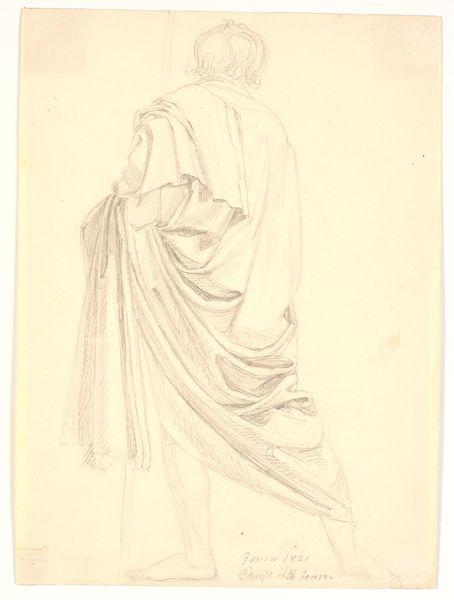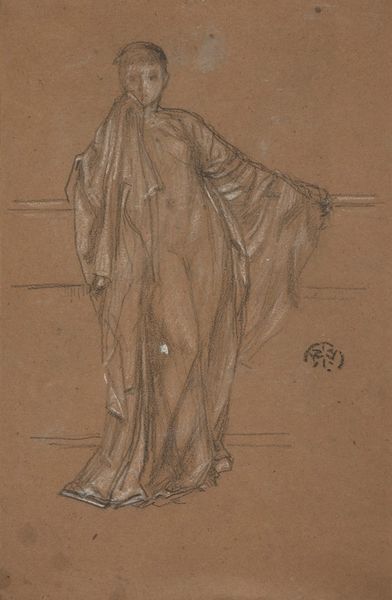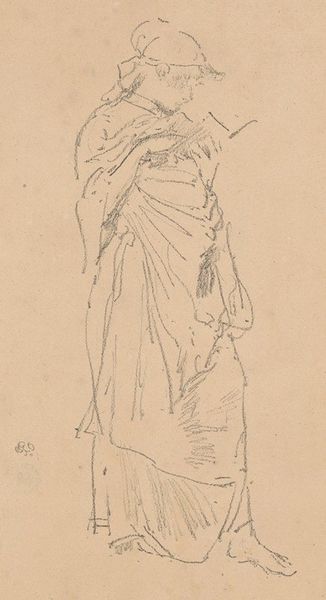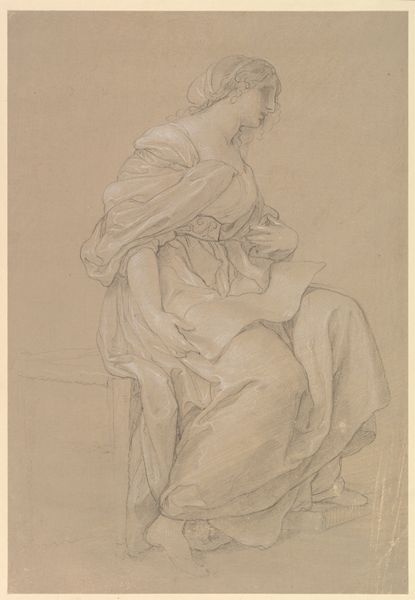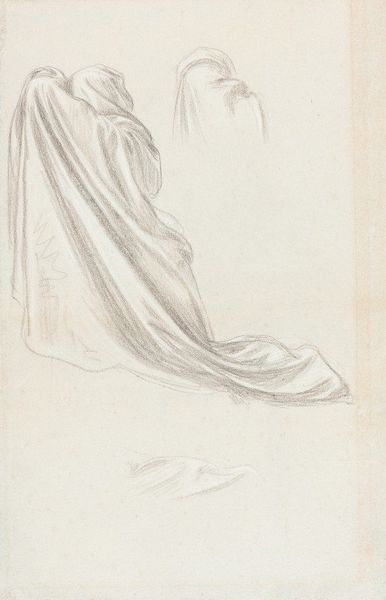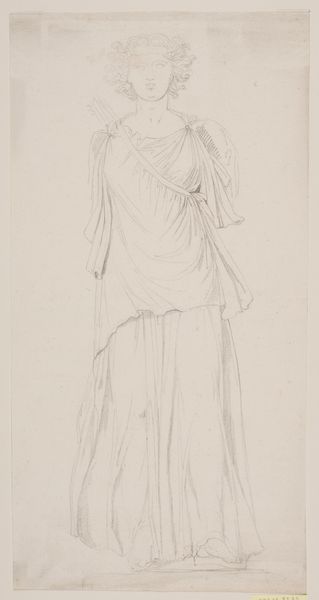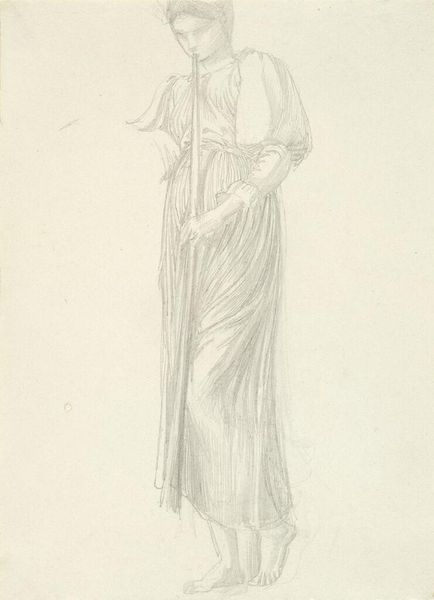
drawing, paper, pencil, chalk, graphite
#
portrait
#
drawing
#
figuration
#
paper
#
pencil drawing
#
pencil
#
chalk
#
graphite
#
portrait drawing
#
pre-raphaelites
#
academic-art
Dimensions: 302 × 253 mm
Copyright: Public Domain
Curator: Here we have Edward Burne-Jones’ “Seated Female Figure,” created in 1873. The artwork currently resides here at The Art Institute of Chicago. It is rendered with graphite, pencil, and chalk on paper. Editor: It's striking, the simplicity and almost melancholic feel it evokes. The draped fabric and her downward gaze create a mood of quiet introspection. It’s delicately drawn. Curator: Yes, Burne-Jones was deeply involved with the Pre-Raphaelite movement, and that influence is clear. They frequently emphasized literary and historical themes and Burne-Jones incorporated them, even in portraiture, often through the poses and dress of his subjects. Editor: I am especially drawn to the way the artist has handled the fabric. It conceals as much as it reveals. There’s a palpable tension there. Is she constrained by those heavy layers, or is there comfort in them? Curator: Pre-Raphaelite artists aimed to reject what they saw as the formulaic and mass-produced art of the industrial era. They saw beauty in detail and were inspired by Medieval and early Renaissance art, turning toward themes of morality and spiritual quest. It may have offered women a visual presence but the heavy emphasis on beauty reinforces societal objectification of the time. Editor: Interesting. You’re reminding me of how the art world continues grappling with visibility versus empowerment. Were these women portrayed as figures to look up to, or simply beautiful objects? I wonder, from her perspective, how the sitter felt being portrayed in this specific way, at this particular moment in art history and for whom the drawing was originally intended? Curator: Excellent point, this piece allows us to explore that visual paradox in Victorian-era art, questioning representation. We, of course, don't know who the model was. In doing so, it reflects changing ideas about identity, gender, and visibility of women artists within that history. Editor: It's a sketch, but there’s a raw vulnerability here too, despite the stylized setting. I find that really captivating and it continues to raise all sorts of relevant considerations. Curator: Absolutely. And in that capacity, "Seated Female Figure" stands not just as a work of art, but as a key into complex conversations about historical and continuing patterns.
Comments
No comments
Be the first to comment and join the conversation on the ultimate creative platform.
